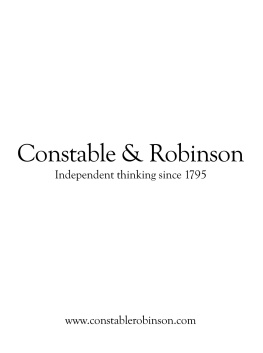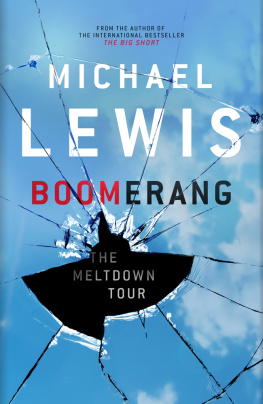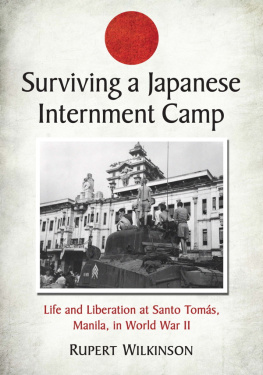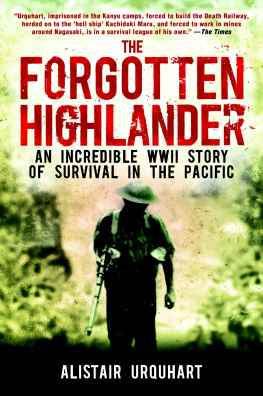Contents
JUDY
A Dog in a Million
Damien Lewis

First published in Great Britain in 2014 by
Quercus Editions Ltd
55 Baker Street
Seventh Floor, South Block
London
W1U 8EW
Copyright 2014 Damien Lewis
The moral right of Damien Lewis to be identified as the author of this work has been asserted in accordance with the Copyright, Designs and Patents Act, 1988.
All rights reserved. No part of this publication may be reproduced or transmitted in any form or by any means, electronic or mechanical, including photocopy, recording, or any information storage and retrieval system, without permission in writing from the publisher.
Every effort has been made to contact copyright holders of material reproduced in this book. If any have been inadvertently overlooked, the publishers will be pleased to make restitution at the earliest opportunity.
A CIP catalogue record for this book is available from the British Library
HB ISBN 978 1 84866 536 1
EBOOK ISBN 978 1 84866 537 8
TPB ISBN 978 1 84866 542 2
(HB only) Endpaper illustrations taken from the collection of Museum The Hague.
You can find this and many other great books at:
www.quercusbooks.co.uk
Minitus acuminae Protected with a sting Motto of the Yangtze River Gunboat, HMS Gnat
even the mosquito was sick of the taste of blood Alice Renshaw, pupil at Pensby High School for Girls, on the Japanese POW camps of the Second World War.
Acknowledgements
Special thanks are due to the following for their help in bringing this book to fruition. My literary agent, Annabel Merullo, her assistant, Laura Williams, and all the team at PFD, including but not limited to Rachel Mills and Alexandra Cliff. My film agent, Luke Speed. Richard Milner and Josh Ireland, my editors at Quercus, plus the entire team there including but not limited to David North, Patrick Carpenter, Jane Harris, Caroline Proud, Dave Murphy and Ron Beard. Heartfelt thanks to you all. Thanks also to Simon Fowler, for your expert and tenacious research capabilities, and to Tean Roberts for reaching out as you did to survivors and their families.
Special thanks are due to the following who gave freely of their time, their expertise and/or their life experiences to enable me to bring this story to life on these pages. First and foremost Rouse Voisey, who shared his incredible life story with me. Rouse, I am hugely and forever in your debt. Captain George W. Duffy, for sharing your incredible life story, for your fantastic written work, and for the on-going assistance and encouragement. Peter Fyans and Fergus Anckhorn, author and subject of the book The Conjuror on the Kwai, which tells the story of Ferguss life and his extraordinary survival as a Japanese prisoner of war. Thank you for your time, your memories and your help. You were and remain an enormous inspiration to me. Lizzie Oliver, for your inspiration and enthusiasm and for your grandfathers sketches and memories, and for reading various drafts. Meg Parkes, for your peerless expertise and your fathers diaries, and for your continuing assistance unto the very end. Phillip Wearne, for reaching out to some of the key people on my behalf, which proved invaluable. Adrienne Howell, of the Mere Literary Festival, for the generous introductions to those who were able to be of so much help in the writing of this book. David Tett, for the excellent volumes of postcards and correspondence from the POW camps. Henk Hovinga, for your persistence in getting your book to me and your steadfast help and advice. Les Parsons, for sharing some of your great uncles experiences as a prisoner of war of the Japanese. Imogen Holmes, for sharing some of your fathers experiences as a prisoner of war of the Japanese. Tony Spero, also for sharing some of your fathers experiences as a prisoner of war of the Japanese. Tyson Milne, for sharing some of your grandfathers experiences as a prisoner of war of the Japanese. Amanda Farrell and Jonathan Moffatt for your assistance in the research and for providing invaluable contacts. My thanks are also due to those others who were of assistance to me, but preferred to remain unacknowledged.
Finally, special thanks to my wife, Eva, and to David, Damien Jnr, and Sianna-Sarah, for putting up with Dads grumpy hours spent locked away in his study writing. Again.
Authors Note
During the Second World War and the years leading up to it, Judy, the dog whose story is told in these pages, adopted many human companions. However, there are sadly few if any survivors from those years. Throughout the period of the research for and the writing of this book I have endeavoured to contact as many of Judys adopted human companions as possible, plus surviving family members of those who have passed away. If there are further witnesses to her incredible story who are inclined to come forward, please do get in touch with me. I may be able to include further recollections of this wonderful dog in future editions.
Particularly when dealing with the prisoner-of-war years there are few written accounts of what took place. So many people remember Judy, her companions and their adventures: so few documented those memories. This is understandable. The time spent by Allied servicemen as prisoners of war of the Japanese was terribly traumatic, and many did not want to speak about it. Many chose to take their stories to their graves. I am very grateful to those few still living who felt able to speak to me. Moreover, memories tend to differ, and apparently none more so than those from an environment like the Far East prisoner-of-war camps, in which so many days felt like a repeat of the hellish days that went before. There were so few milestones with which to mark the passing of time, or to anchor the memories.
The passage of the decades has also served to further obscure memory. The few written accounts that do exist also tend to differ in matters of detail. Locations and timescale are often somewhat uncertain. That being said, I have done my best to provide a comprehensible sense of place, chronology and narrative to the story as told in these pages. In the POW years in particular the methodology I have used to reconstruct where and when events took place is the most likely scenario. If two or more testimonies or sources point to a particular time or place, I have opted to use that account as most likely. Where necessary I have recreated small sections of dialogue to aid the storys flow.
The above notwithstanding, any mistakes herein are entirely of my own making, and I would be happy to correct any in future editions. Likewise, while I have endeavoured to locate the copyright holders of the photos, sketches and other images used in this book, again this has not always been straightforward or easy. I would be happy to correct any mistakes in future editions.
For all at Sunninghill.
A little slice of paradise.
For giving
David, Damien Jnr and Sianna
the chance to be who they can be.
Preface
Only one animal ever achieved the dubious accolade of being made an official prisoner of war of the Japanese in World War Two. It was a dog. She was a beautiful and regal-looking English Pointer, and perhaps one of the most extraordinary of our canine companions ever to grace this earth.
In September 1942 she was given Japanese prisoner-of-war number 81A-Medan.
Her real name was Judy, or Judy of Sussex as her shipmates came to call her for she spent most of her service life as the mascot of the Royal Navy gunboats the Gnat and the Grasshopper. But Judy of Sussex was much, much more than just a ships dog. The way in which I came across her story drew me to it, inexorably, convincing me that this was a tale that absolutely had to be told.










